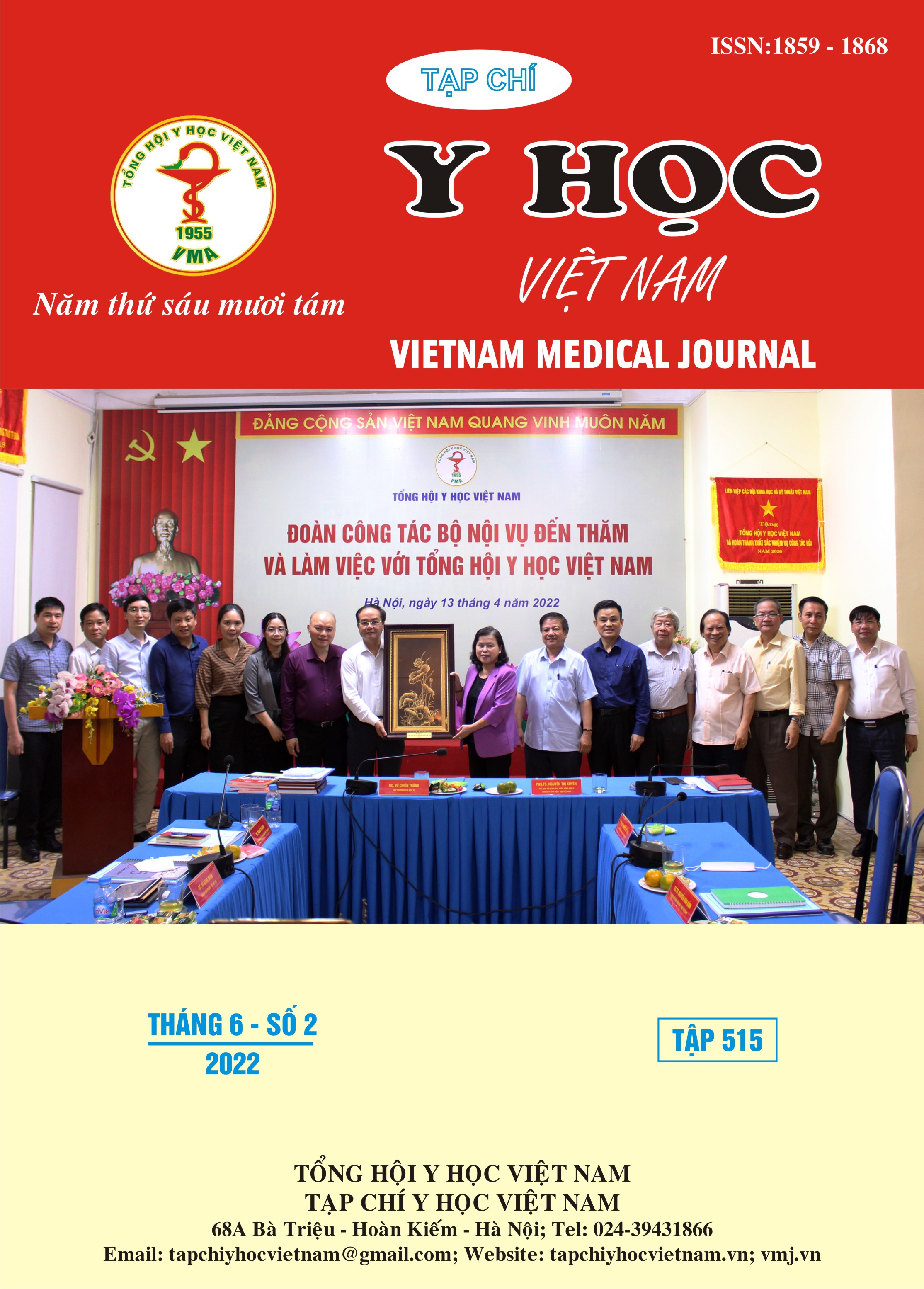RISK FACTORS OF CEREBRAL VENOUS THROMBOSIS
Main Article Content
Abstract
Objective: To describe risk factors of cerebral venous thrombosis. Subjects and methods: A prospective, descriptive study of 38 patients with cerebral venous thrombosis treated at the Department of Neurology, Bach Mai Hospital from March 2020 to June 2021. Results: The mean age was 42.4 ± 14.8, the male/female ratio was 1.2:1. The rate of lack of risk factors for primary hypercoagulability PC, PS, ATIII was 39.5%, of which protein S deficiency was the most common (21.1%), protein C and ATIII deficiency was 18, 4% and 10.5%. In women, oral contraceptives, childbirth, after miscarriage or abortion are important risk factors for cerebral venous thrombosis in which oral contraceptive use was the major risk factor (44.2%). The risk factors for secondary hypercoagulation related to antibodies were found with a low rate, of which antiphospholipids were the highest (5.3%), antinuclear antibodies ANA (2.6%), anti dsDNA (2.6%), anti cardiolipin (2.6%). Some of the risk factors we also encountered in the study group of patients included: Diabetes mellitus (5.3%), basedow (5.3%), polycythemia vera (5.3%). Conclutions: The rate of lack of risk factors for primary hypercoagulability PC, PS, ATIII was 39.5%, of which protein S deficiency was the most common (21.1%). In women, oral contraceptives was the major risk factor (44.2%). The risk factors for secondary hypercoagulation related to antibodies were found with a low rate were antiphospholipids (5.3%), antinuclear antibodies ANA (2.6%), anti dsDNA (2.6%), anti cardiolipin (2.6%).
Article Details
Keywords
Cerebral venous thrombosis, risk factors
References
2. Coutinho JM, Ferro JM, Canhao P, et al. Cerebral venous and sinus thrombosis in women. Stroke. 2009;40(7):2356-2361.
3. Caso V, Agnelli G, Paciaroni M. Handbook on cerebral venous thrombosis. Karger Medical and Scientific Publishers; 2008:16-22.
4. Lê Văn Thính. Nhận xét một số đặc điểm lâm sàng, cận lâm sàng và điều trị huyết khối tĩnh mạch não. Tập san Hội Thần kinh học Việt Nam, 2, 10. 2010;
5. Trịnh Tiến Lực. Nghiên cứu đặc điểm lâm sàng và hình ảnh học của bệnh nhân huyết khối tĩnh mạch não Luận án Tiến sỹ y học, Đại học y hà nội. 2020;


